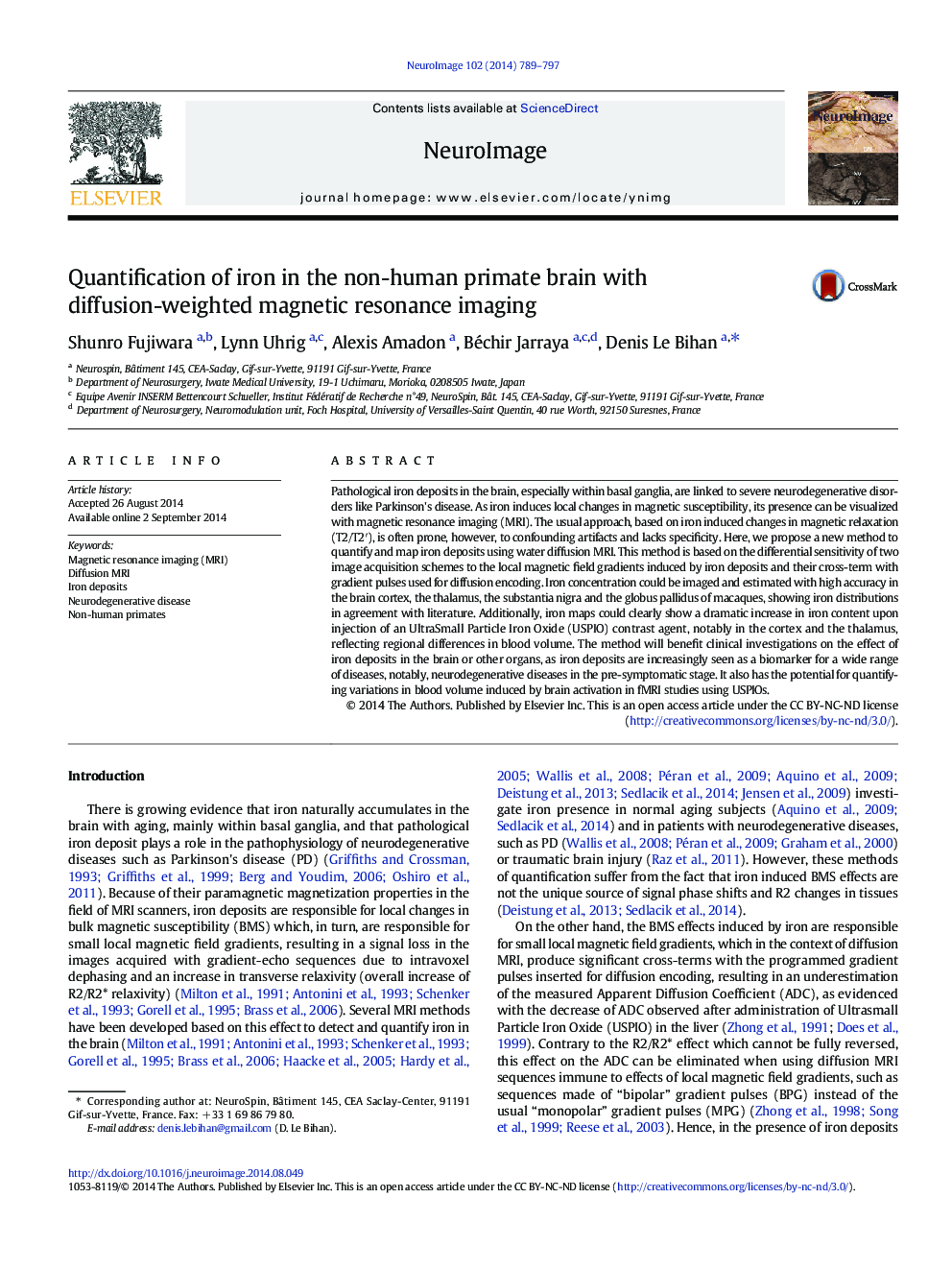| Article ID | Journal | Published Year | Pages | File Type |
|---|---|---|---|---|
| 6026098 | NeuroImage | 2014 | 9 Pages |
Abstract
Pathological iron deposits in the brain, especially within basal ganglia, are linked to severe neurodegenerative disorders like Parkinson's disease. As iron induces local changes in magnetic susceptibility, its presence can be visualized with magnetic resonance imaging (MRI). The usual approach, based on iron induced changes in magnetic relaxation (T2/T2â²), is often prone, however, to confounding artifacts and lacks specificity. Here, we propose a new method to quantify and map iron deposits using water diffusion MRI. This method is based on the differential sensitivity of two image acquisition schemes to the local magnetic field gradients induced by iron deposits and their cross-term with gradient pulses used for diffusion encoding. Iron concentration could be imaged and estimated with high accuracy in the brain cortex, the thalamus, the substantia nigra and the globus pallidus of macaques, showing iron distributions in agreement with literature. Additionally, iron maps could clearly show a dramatic increase in iron content upon injection of an UltraSmall Particle Iron Oxide (USPIO) contrast agent, notably in the cortex and the thalamus, reflecting regional differences in blood volume. The method will benefit clinical investigations on the effect of iron deposits in the brain or other organs, as iron deposits are increasingly seen as a biomarker for a wide range of diseases, notably, neurodegenerative diseases in the pre-symptomatic stage. It also has the potential for quantifying variations in blood volume induced by brain activation in fMRI studies using USPIOs.
Keywords
Related Topics
Life Sciences
Neuroscience
Cognitive Neuroscience
Authors
Shunro Fujiwara, Lynn Uhrig, Alexis Amadon, Béchir Jarraya, Denis Le Bihan,
